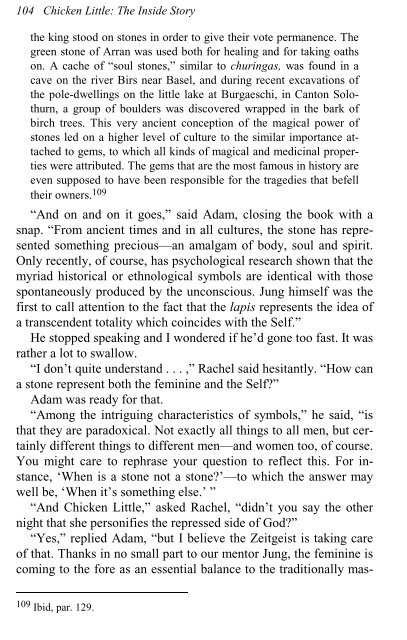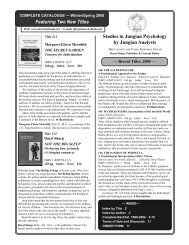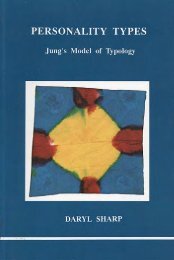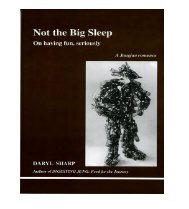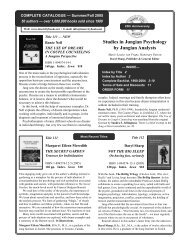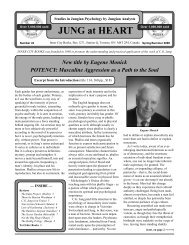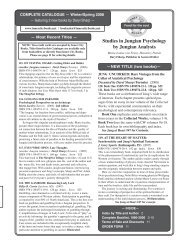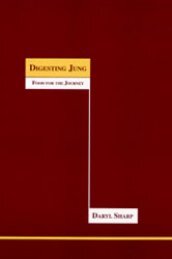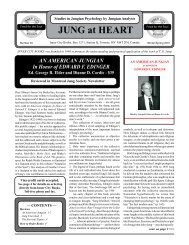Chicken Little: The Inside Story (A Jungian ... - Inner City Books
Chicken Little: The Inside Story (A Jungian ... - Inner City Books
Chicken Little: The Inside Story (A Jungian ... - Inner City Books
Create successful ePaper yourself
Turn your PDF publications into a flip-book with our unique Google optimized e-Paper software.
104 <strong>Chicken</strong> <strong>Little</strong>: <strong>The</strong> <strong>Inside</strong> <strong>Story</strong><br />
the king stood on stones in order to give their vote permanence. <strong>The</strong><br />
green stone of Arran was used both for healing and for taking oaths<br />
on. A cache of “soul stones,” similar to churingas, was found in a<br />
cave on the river Birs near Basel, and during recent excavations of<br />
the pole-dwellings on the little lake at Burgaeschi, in Canton Solothurn,<br />
a group of boulders was discovered wrapped in the bark of<br />
birch trees. This very ancient conception of the magical power of<br />
stones led on a higher level of culture to the similar importance attached<br />
to gems, to which all kinds of magical and medicinal properties<br />
were attributed. <strong>The</strong> gems that are the most famous in history are<br />
even supposed to have been responsible for the tragedies that befell<br />
their owners. 109<br />
“And on and on it goes,” said Adam, closing the book with a<br />
snap. “From ancient times and in all cultures, the stone has represented<br />
something precious—an amalgam of body, soul and spirit.<br />
Only recently, of course, has psychological research shown that the<br />
myriad historical or ethnological symbols are identical with those<br />
spontaneously produced by the unconscious. Jung himself was the<br />
first to call attention to the fact that the lapis represents the idea of<br />
a transcendent totality which coincides with the Self.”<br />
He stopped speaking and I wondered if he’d gone too fast. It was<br />
rather a lot to swallow.<br />
“I don’t quite understand . . . ,” Rachel said hesitantly. “How can<br />
a stone represent both the feminine and the Self?”<br />
Adam was ready for that.<br />
“Among the intriguing characteristics of symbols,” he said, “is<br />
that they are paradoxical. Not exactly all things to all men, but certainly<br />
different things to different men—and women too, of course.<br />
You might care to rephrase your question to reflect this. For instance,<br />
‘When is a stone not a stone?’—to which the answer may<br />
well be, ‘When it’s something else.’ ”<br />
“And <strong>Chicken</strong> <strong>Little</strong>,” asked Rachel, “didn’t you say the other<br />
night that she personifies the repressed side of God?”<br />
“Yes,” replied Adam, “but I believe the Zeitgeist is taking care<br />
of that. Thanks in no small part to our mentor Jung, the feminine is<br />
coming to the fore as an essential balance to the traditionally mas-<br />
109 Ibid, par. 129.


